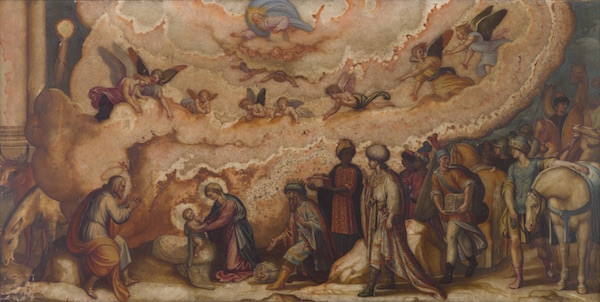Jacques Stella, Rest on the Flight into Egypt, oil on lapis lazuli and blackboard, covered with blackboard. Pajelu Collection I Courtesy Galleria Borghese
Designed by Francesca Cappellettidirector of the Roman museum, and the art historian Patrizia Cavazzinithe exhibition opens to the public the doors of a singular art, which since its inception has aroused amazement and admiration, where the tension towards eternity is part of the ancient competition between painting and sculpture and in the game, typical of this epoch, between sister arts: in the seventeenth century, in fact, sculptors used colored marbles and painters painted on stone, while rare metals and woods contributed to the creation of clocks, small altars and furnishings adorned with reliefs, paintings and sculptures.

Leonardo Grazia, Lucrezia. Oil on blackboard. Borghese Gallery
From 25 October 2022 to 29 January 2023, an itinerary in eight sections will describe the context of the birth and spread of stone painting: from the extraction of materials to the adventurous landing in the artists’ workshops and, finally, in the collections of villas and palaces luxurious, centers of debate and culture in a refined century. We will find the precious sixteenth-century portraits created by Sebastiano del Piombo, Bronzino and Francesco Salviati, where refined stones such as red porphyry or African marble satisfy the desire of the clients to deliver their image to eternity, but also Venus and heroines such as Lucretia and Cleopatra painted by the Tuscan Leonardo Grazia, a champion of blackboard painting, as well as works similar to talismans, to which magical powers of protection from evil were attributed, and incorruptible images of devotion that high prelates kept in their bedrooms, fromAdoration of the Magi on alabaster by Antonio Tempesta – a master in transforming village stone with a few brush strokes – to paintings by Orazio Gentileschi, Carlo Saraceni and Cavalier d’Arpino.
Not to be missed will be the sections dedicated to landscapes and colored stones. Here this art gives its best with dark supports used to bring out the night scenes or with precious lapis lazuli used for the sky and the sea: the color and the streaks of the stones thus become part of the meaning of the work, while their decorative potentials find the maximum exaltation.

Antonio Tempesta, Adoration of the Magi. Oil on alabaster. Borghese Gallery. Photo Mauro Cohen

